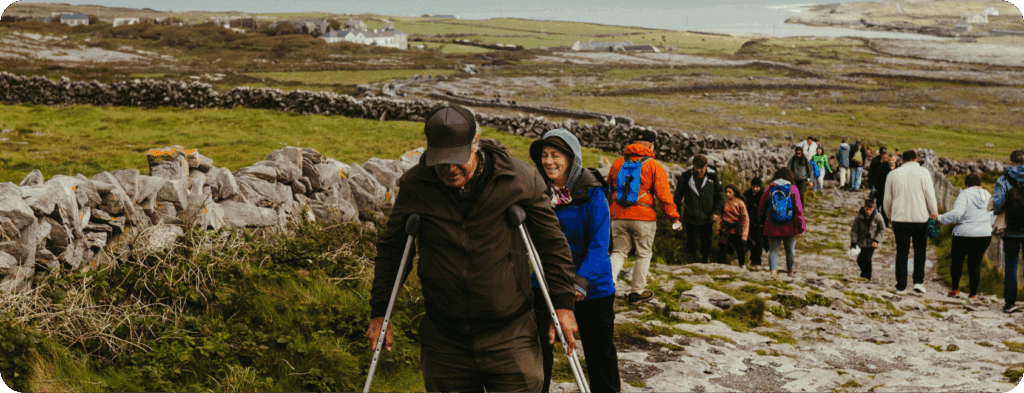
What key performance indicators (KPIs) do you use to measure your website’s current performance? When planning a website redesign website, what are your goals and objectives? And, how can you tweak your digital marketing and content marketing strategy to continually increase the number of travelers visiting your site?
What defines success is a little different for each website, so what drives conversions for travelers in other industries, might drive potential customers away from your site.
They only way to know what motivates your group of targeted travelers is to observe and experiment. That means revisiting how you set goals, and the KPIs you’re using to track them, both in the short and long term.
If you’ve just recently overhauled your website, are planning to, or just want to learn how to better measure your website’s performance, we’re here to help!
Define Your Website Goals
Numbers alone won’t tell you anything. You must define your goals first and the most important metrics will emerge from there. But what does that look like?
- If you’re a DMO, you might want to drive more traffic to partner pages
- If you’re a resort, hotel or tour operator, you might want to increase website conversion rates and direct bookings
- If you’re targeting a particular segment, such as Chinese travelers, you might want more traffic from a certain region or channel such as social media
All of your tweaks and adjustments should have the goal in mind of keeping visitors on the page longer so your marketing has more time to work its magic. There are also off-page factors to consider that can increase bookings as well, such as building a reputation as an authority in your subject area or technical performance like site speed.
If your new site is up and running, you can test these now. If you haven’t redesigned your site yet, consider how to work these valuable metrics into your design choices. Select two periods before and after the redesign, including the same amount of days during the same part of the month if possible, to compare KPIs on your performance.
Don’t know where to start? Let’s review some of the most commonly analyzed website metrics.
1 | Traffic
This category not only measures how many unique visitors are coming to your site but how many non-unique returns there are and which pages bring them back.
2 | Traffic sources
Part of this metric is also the traffic sources, such as organic, referral, direct, from social networks and a global view of visitors broken down by geographic origin. This tells you where your marketing budget has brought back the greatest ROI. Do more of what has worked and experiment with what hasn’t.
3 | Time on page
This could be good or bad based on what the page is trying to achieve. If it is the shopping cart page before purchase, you don’t want the visitor hesitating there. You want a higher time on page on blogs, image-heavy pages and booking information sources.
4 | Bounce rate and exit rate
These two metrics can sometimes be confusing. The difference is that bounces measure people who come to one page and quickly leave. They are not immediately impressed with the design or do not recognize you as an authority.
Exit rate measures people who have looked around the site and when they reach a certain page, they navigate away. Keep an eye on both, as they’ll help you figure out what content isn’t resonating.
5 | Engagement
When visitors are engaged, they will follow the flow you’ve set up on the site. Clicks and views on visuals are a good indicator of engagement, but not if it doesn’t lead to a conversion, whatever that means in your case.
6 | Conversions
Engagement and conversions go hand in hand. Overall conversions can be set up in Google Analytics to measure bookings, subscribers to the email list, signups for blog notification or shares of individual pages on social networks.
You can set up the primary or secondary call to action (CTA) on specific images, then measure how effective those images are in driving conversions.
7 | Customer Lifetime Value
Combine metrics like conversions by traffic source to find out where your best customers are coming from. Then you can start assigning customer lifetime value (CLV) numbers to specific types of customers and generate personas to attract more people like them.
More Technical KPIs
8 | Page speed
Respect your customer’s time. If the page takes too much time to load, it doesn’t matter what’s on it because you have lost their attention. Best-in-class pages load within 3 seconds and the faster the better.
9 | Page requests
Measure your average page requests because each one slows down the load time. The amount and size of your files directly affect this. Bounce rates can jump up from 9% to 38% if a page’s load time goes from 2 to 5 seconds.
10 | Page Size
Page size matters as well, so crush your images as much as possible without losing resolution. Ideally, all pages, even image-heavy ones, should be smaller than 3 MB. This is not always easy but should be a priority because it has such a significant impact on the user experience and conversion rates.
11 | Mobile readiness
It is no longer an option to think about mobile-readiness. Mobile is where the customers are. Test the responsiveness of the site to a variety of mobile displays. The viewport tag defines what appears on the screen, no matter how small that screen may be, so you can control the site visitor’s experience.
12 | Meta descriptions
The crawlers that rank your site in the search results still care about what people can’t see. While you make adjustments for on-page content that motivates site visitors, don’t neglect the following:
- Page titles related to keywords that you want to rank for
- Meta descriptions that describe the content of your web pages
- Headings that serve as summaries of the material
- Sitemaps to help them navigate through the site
- Adequate security with up-to-date SSL certificates
All of these make it easier for you to be found by more travelers.
Going Further and Deeper
Each site deserves its own unique profile of metrics based on your goals and challenges. Always keep in mind that the KPIs you put in place should be measuring success with bigger picture marketing goals like demand gen, a better user experience, brand lift, or whatever has proven to be your area of excellence.
Image credit: @callmecamps.












